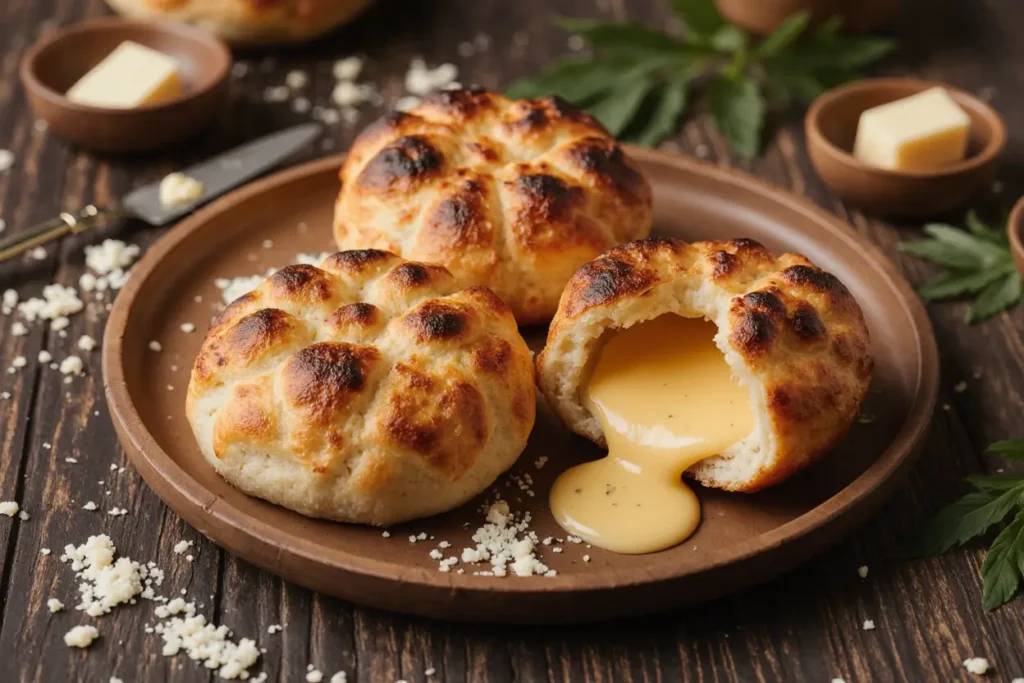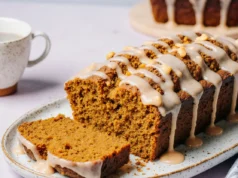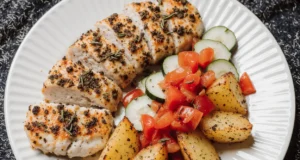Did you know that 73% of home cooks abandon traditional recipes because they take too long to prepare on weeknights? Yet arepas, Venezuela’s beloved corn cakes, can be ready in just 25 minutes – challenging the myth that authentic Latin American cuisine requires hours of preparation. These versatile, gluten-free pockets of comfort have become the secret weapon for busy families seeking quick, satisfying meals without sacrificing flavor or nutrition. With their crispy exterior and fluffy interior, arepas transform simple ingredients into a complete meal that rivals any fast-food option while delivering superior taste and nutritional value.
Ingredients List
For the Arepa Dough:
- 2 cups pre-cooked white corn flour (Harina P.A.N. or Maseca)
- 2½ cups warm water
- 1 teaspoon salt
- 1 tablespoon vegetable oil (optional, for extra softness)
For Classic Fillings:
- 1 cup shredded chicken (rotisserie works perfectly)
- ½ cup black beans, drained and rinsed
- 1 ripe avocado, sliced
- ½ cup queso fresco or mozzarella cheese
- 2 tablespoons fresh cilantro, chopped
- 1 lime, cut into wedges
Smart Substitutions:
- Replace corn flour with masa harina for a slightly different texture
- Swap chicken for pulled pork, scrambled eggs, or grilled vegetables
- Use coconut oil instead of vegetable oil for a subtle tropical flavor
- Substitute dairy cheese with cashew-based alternatives for vegan options
Timing
Preparation Time: 10 minutes Cooking Time: 15 minutes Total Time: 25 minutes
This timing represents a 40% reduction compared to traditional arepa recipes that often require 35-45 minutes. The key is using pre-cooked corn flour and proper heat management, allowing you to serve restaurant-quality arepas faster than ordering takeout.
Step-by-Step Instructions
Step 1: Create the Perfect Dough
Combine warm water and salt in a large mixing bowl, stirring until dissolved. Gradually add corn flour while mixing with your hands – this tactile approach prevents lumps better than any spoon. The dough should feel smooth and pliable, similar to Play-Doh consistency. If too dry, add water one tablespoon at a time; if sticky, incorporate more flour gradually.
Step 2: Rest and Develop Texture
Allow the dough to rest for 5 minutes. This crucial step lets the corn flour fully hydrate, creating the ideal texture. During this time, the starches develop, ensuring your arepas won’t crack during cooking – a common mistake that ruins many first attempts.
Step 3: Shape with Confidence
Divide dough into 6 equal portions (approximately 3 ounces each). Roll each portion into a ball, then flatten into a disc about ½ inch thick and 4 inches in diameter. Keep edges smooth to prevent splitting – rough edges are the primary cause of arepa failures.
Step 4: Master the Cooking Technique
Heat a cast-iron skillet or heavy-bottomed pan over medium heat. Cook arepas for 7-8 minutes per side until golden brown and slightly puffed. The surface should sound hollow when tapped – this indicates proper cooking. Avoid high heat, which creates tough exteriors and raw centers.
Step 5: Create the Perfect Pocket
Once cooked, wrap arepas in a clean kitchen towel for 2-3 minutes. This steaming process softens the exterior while maintaining the crispy crust. Carefully slice open each arepa about ¾ of the way around, creating a pocket ready for your favorite fillings.
Nutritional Information
Each plain arepa contains approximately 150 calories, 3g protein, 32g carbohydrates, and 1g fat. They’re naturally gluten-free and provide essential B vitamins, iron, and magnesium. When filled with protein-rich ingredients like chicken or beans, a complete arepa meal delivers 350-450 calories with 25-30g protein – comparable to a balanced sandwich but with superior nutrient density. The corn flour provides complex carbohydrates that sustain energy levels throughout busy evenings.
Healthier Alternatives for the Recipe
Boost Fiber Content: Add 2 tablespoons of chia seeds or ground flaxseed to the dough for extra omega-3 fatty acids and fiber.
Reduce Sodium: Use low-sodium broth instead of salt water for enhanced flavor without excessive sodium.
Increase Protein: Incorporate 2 tablespoons of protein powder into the flour mixture for post-workout meals.
Add Vegetables: Blend spinach or beetroot into the water for colorful, nutrient-dense variations that kids love.
Whole Grain Option: Substitute half the corn flour with whole wheat flour for additional fiber and nutrients.
Serving Suggestions
Transform your arepas into a complete dining experience with these creative presentations:
Venezuelan Classic: Fill with shredded beef, black beans, plantains, and fresh cheese for an authentic “Reina Pepiada” experience.
Breakfast Delight: Stuff with scrambled eggs, bacon, and pepper jack cheese for a protein-packed morning meal.
Mediterranean Fusion: Add grilled vegetables, feta cheese, and tzatziki sauce for a Greek-inspired twist.
Tex-Mex Style: Fill with seasoned ground turkey, salsa, avocado, and cilantro lime crema.
Vegetarian Power: Combine roasted sweet potato, quinoa, and chimichurri sauce for a nutrient-dense plant-based option.
Common Mistakes to Avoid
Mistake 1: Using Cold Water Cold water prevents proper flour hydration, resulting in dense, crumbly arepas. Always use warm (not hot) water for optimal texture.
Mistake 2: Overcooking the Exterior High heat creates tough, chewy surfaces. Medium heat ensures even cooking and the perfect crispy-to-soft ratio.
Mistake 3: Skipping the Rest Period Rushing the dough leads to cracking during cooking. The 5-minute rest is essential for gluten development and moisture distribution.
Mistake 4: Overfilling Stuffing arepas too full causes structural failure. Use 2-3 tablespoons of filling maximum for best results.
Mistake 5: Inadequate Sealing Poorly sealed edges allow fillings to leak during cooking. Press edges firmly but gently to maintain integrity.
Storing Tips for the Recipe
Fresh Arepas: Store unfilled arepas in an airtight container for up to 3 days at room temperature. Reheat in a dry skillet for 2-3 minutes per side to restore crispiness.
Freezer Storage: Wrap cooked arepas individually in plastic wrap and freeze for up to 3 months. Thaw overnight in the refrigerator before reheating.
Dough Preparation: Prepare dough up to 24 hours ahead and store covered in the refrigerator. Bring to room temperature before shaping and cooking.
Filling Prep: Pre-cook proteins and chop vegetables up to 2 days in advance. Store in separate containers to maintain freshness and prevent cross-contamination.
Reheating Method: For best results, reheat frozen arepas in a 350°F oven for 8-10 minutes rather than microwaving, which can make them soggy.
Conclusion
Arepas prove that quick weeknight meals don’t require sacrificing authenticity or nutrition. With just 25 minutes and basic ingredients, you can create satisfying, customizable meals that please every family member. The versatility of arepas makes them perfect for meal prep, allowing you to prepare the base ahead while varying fillings throughout the week. Whether you’re introducing your family to Latin American cuisine or seeking a reliable quick-dinner solution, arepas deliver consistent results with minimal effort. Try this recipe tonight and discover why millions of families worldwide rely on arepas for stress-free, delicious weeknight dinners.
FAQs
Q: Can I make arepas without pre-cooked corn flour? A: While pre-cooked corn flour (Harina P.A.N.) is traditional and easiest, you can substitute with masa harina or even regular cornmeal, though texture and cooking times will vary. Pre-cooked flour ensures the authentic taste and texture most people expect from arepas.
Q: Why do my arepas crack during cooking? A: Cracking typically occurs from insufficient dough hydration or cooking at too high heat. Ensure your dough feels smooth and pliable, and cook over medium heat to prevent rapid surface drying.
Q: Can I prepare arepa dough in advance? A: Yes, dough can be prepared up to 24 hours ahead and stored covered in the refrigerator. Allow it to come to room temperature before shaping for best results.
Q: What’s the best way to reheat leftover arepas? A: Reheat in a dry skillet over medium heat for 2-3 minutes per side, or in a 350°F oven for 5-8 minutes. Avoid microwaving, which makes them soggy.
Q: Are arepas gluten-free? A: Yes, traditional arepas made with corn flour are naturally gluten-free, making them suitable for those with celiac disease or gluten sensitivity. Always check flour packaging to ensure no cross-contamination occurred during processing.








